The mystery of the buried temple
This story began two and a half thousand years ago. Although I happened to touch it only last year. And in what happened next, as if in a puzzle, a lot of lines formed at once. And at the junction of fundamental physics and equally fundamental archeology, a very applied scientific project was born, which simply cannot but be shared.
This is a non-standard “do it yourself”.

In August 2017, working in the press service of NUST “MISiS”, I learned about the technique, which I called “X-ray for mountains” for myself. The university’s leading expert and professor at the Lebedev Physical Institute, Natalya Gennadyevna Polukhina, the head of one of the three scientific groups in the world who is involved in so-called “muon radiography,” introduced me to her. The method by which it is possible to “shine through” objects of kilometer size is based on the registration of muons - elementary particles that are born due to the collision of cosmic rays with the Earth’s atmosphere. So many of these particles are born that every minute 10 thousand muons fall on every square meter of the earth's surface. If any obstacle (a building, mountain or just soil) is encountered on their way, then passing through it, the muon flux weakens. The rate of decrease in flow depends both on the thickness of the obstacle, and the density of its constituent substance. The maximum mean free path in water, for example, is about 8.5 km. In the land - almost 2.5 km.
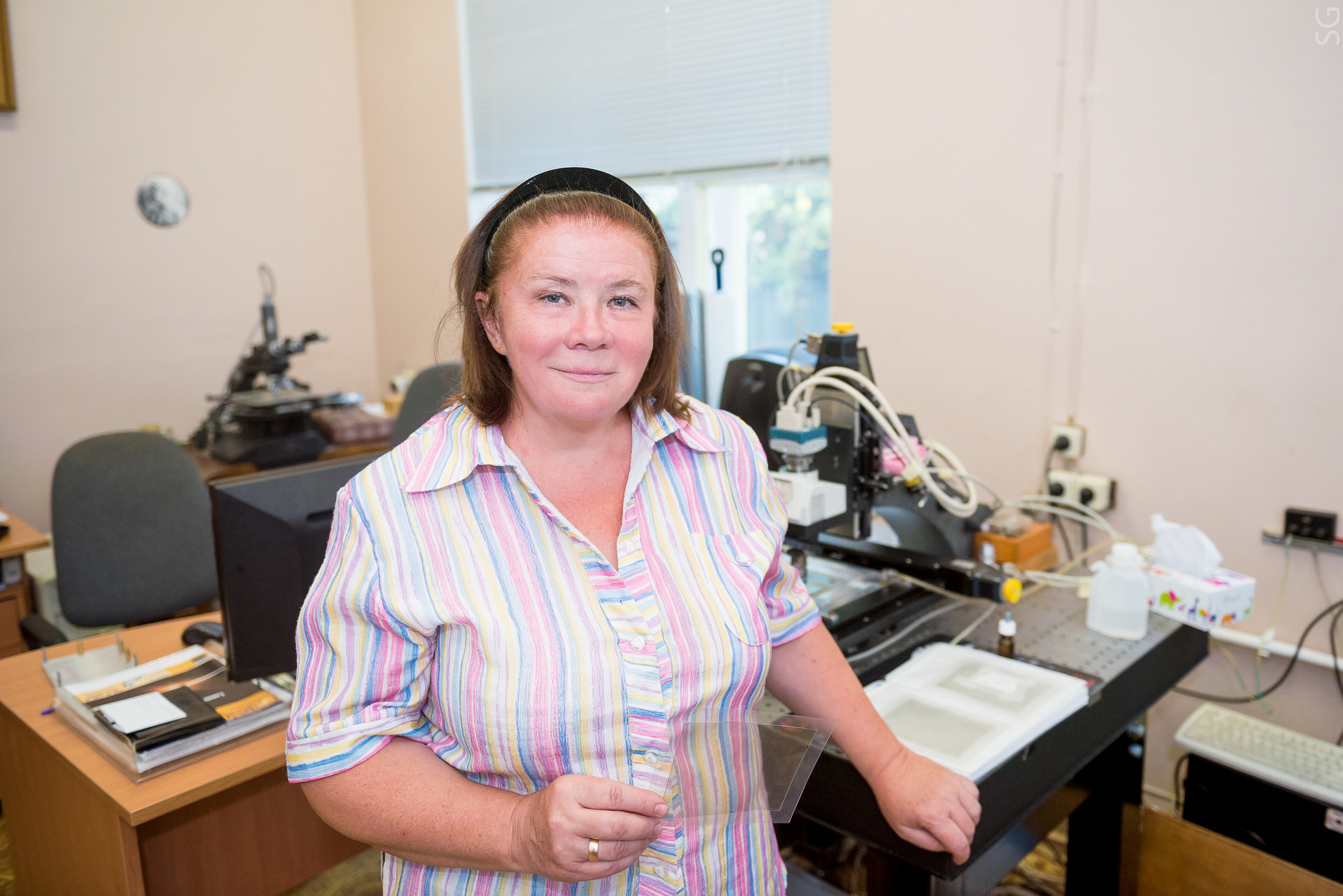
However, the interiors of small (several meters) objects can also be peeked. And the resolution will be even better. The main thing is that only this object should stand on the path of the muons to the sensor. As Natalya Gennadyevna herself says: The new technology has other areas of application. “It is possible to assess the condition of the vent of a volcano, a nuclear power plant reactor, or a glacier in the mountains. You can find a new natural underground storage facility for natural gas, catch a fire originating in a mountain that was burned during coal mining long before it burns out from the inside, predict the eruption of a volcano or prevent the catastrophic consequences of ground failures in places of mined mines or on city streets, such as in Berezniki (Perm Territory). And we must remember that the inhabitants of many large settlements suffer from such technological failures. ”
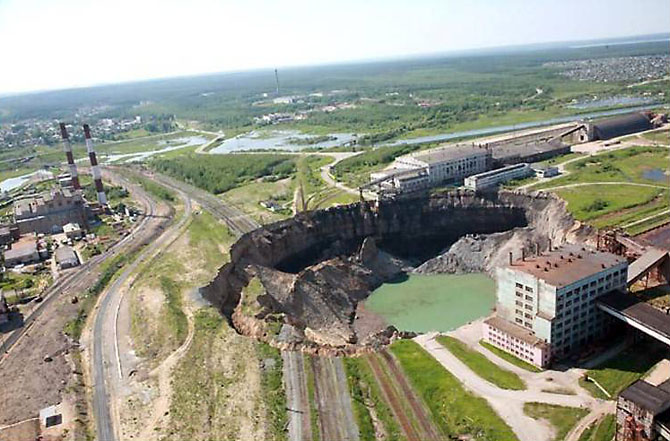
As I said, there are three such groups in the world. One in Italy, one in Japan, one in Russia. The Japanese group, by the way, shortly before became famous, having found a hidden room in the pyramid of Cheops. What modestly wrote in Nature. I don’t know what the Italians do, but Professor Polukhina oversees the installation of muon sensors as part of the new SHiP experiment (Search for Hidden Particles) at CERN. An experiment in which NUST MISiS participates together with 40 leading universities of the world. However, our conversation was remembered precisely by the fact that with the help of this technique one can search for voids and even determine the occurrence of rocks of different densities. Because with a difference of 5%, they already become visible. So scientists were looking for a place for a model experiment.
After a couple of months, thanks to the Russian Union of Young Scientists, I, as the editor-in-chief of the site on the search for financing (if interested, see the profile) for scientific groups was lucky enough to come to Dagestan State University.
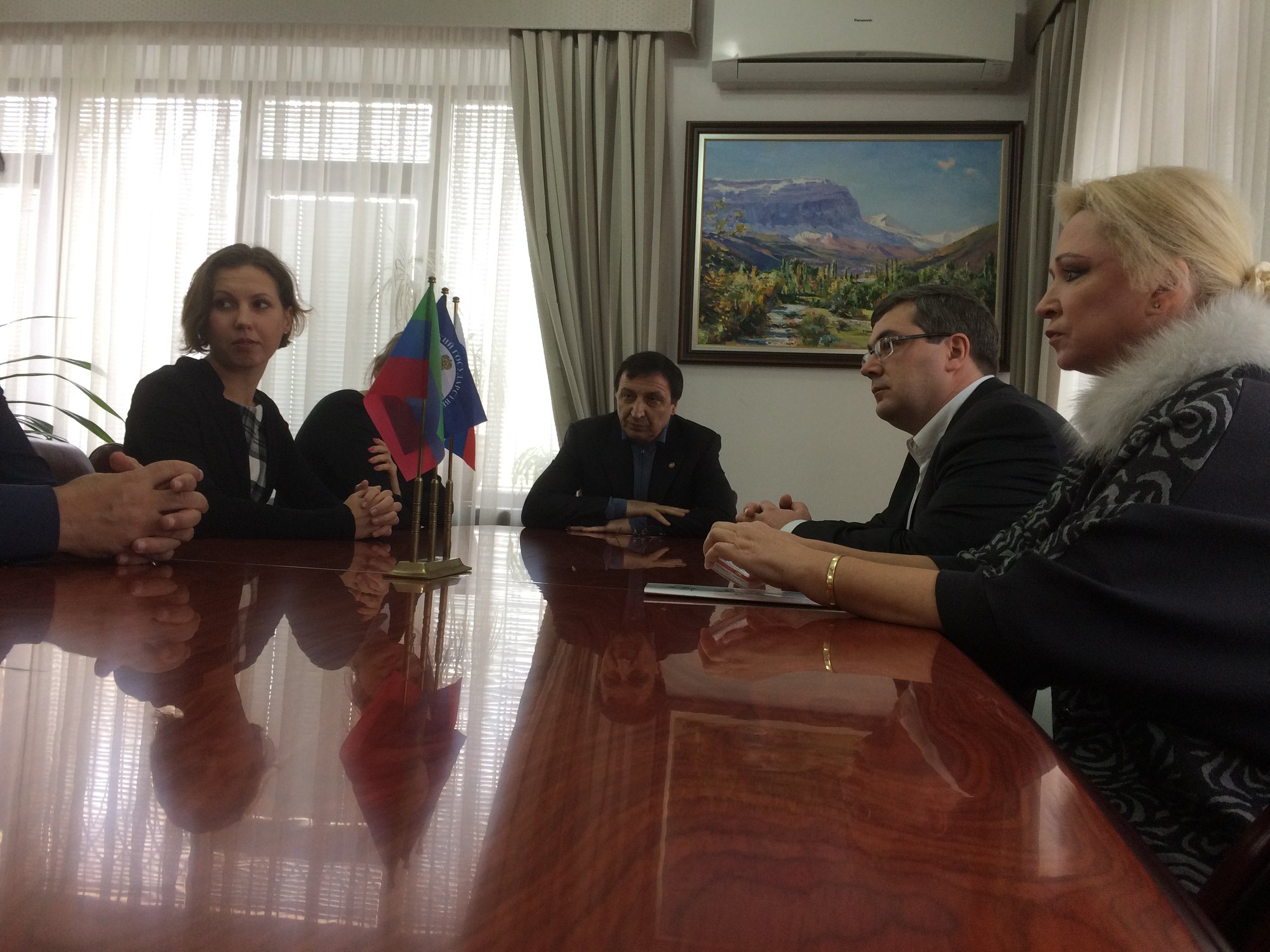
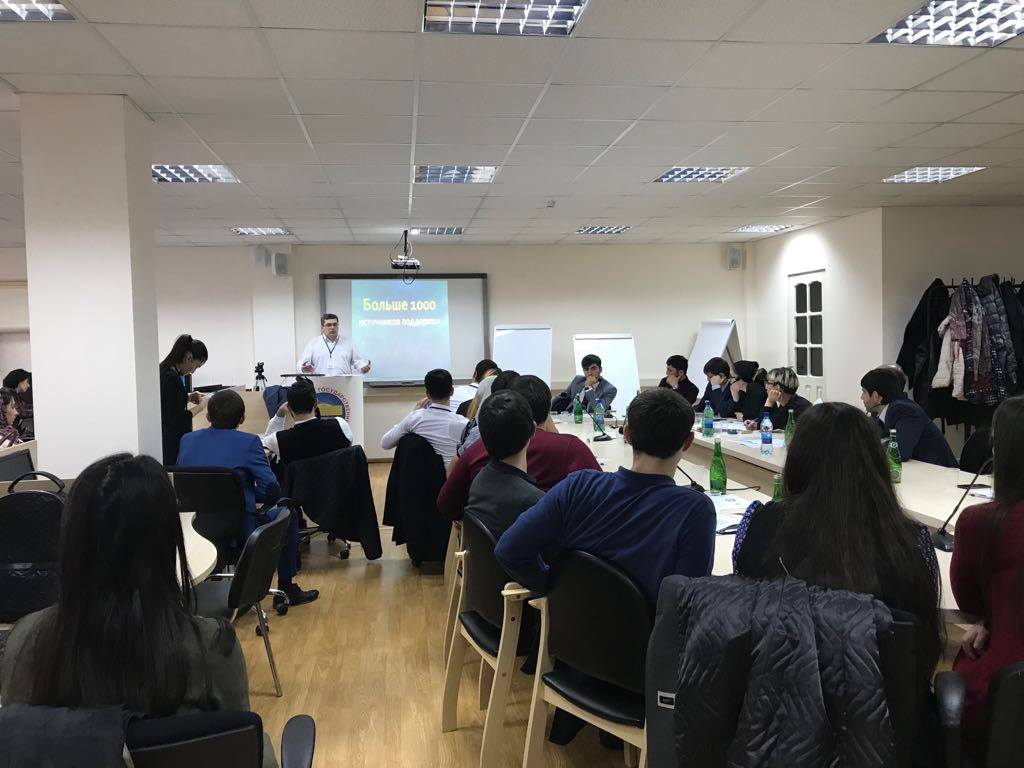
And then, together with his representatives - get on an excursion to Derbent. And on top of the city, in the fortress of Naryn-kala, we came across a strange holey dome. To the question: “What is this?”, They told me a mysterious story.
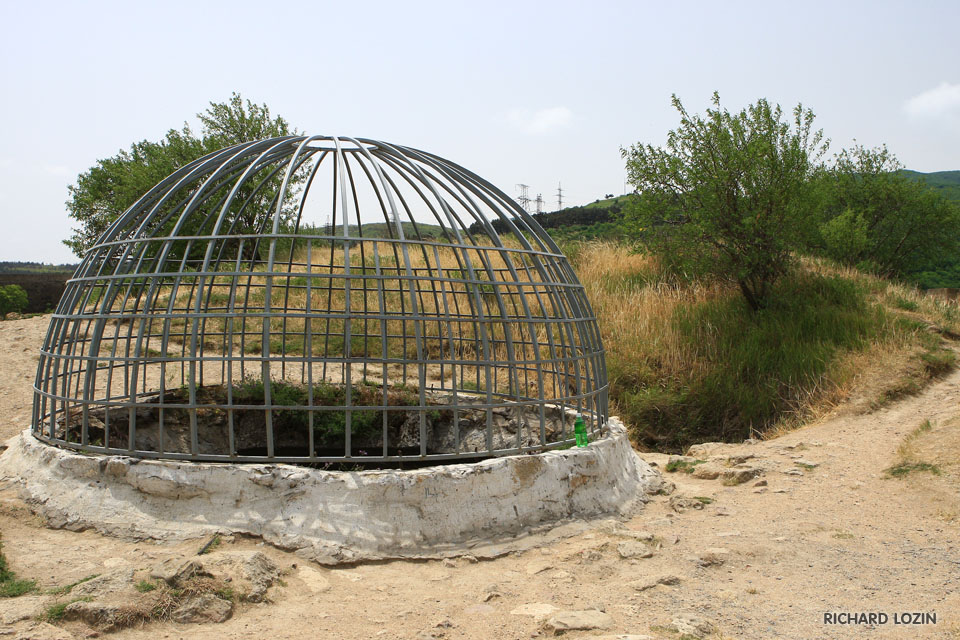
It turned out that in this place underground located an ancient reservoir. The 12-meter-deep building dates back to the 300th year of our era. About two hundred and three hundred years ago, it was no longer used for its intended purpose, but before that it regularly supplied the fortress with water.
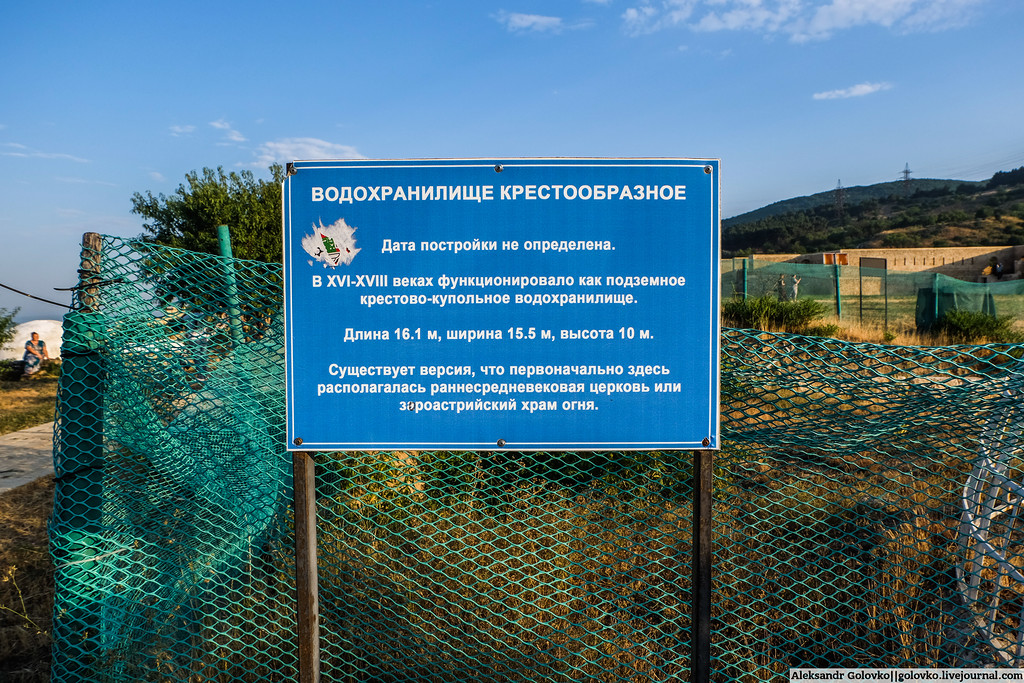
And everything would be fine, but the reservoir is somehow strange. In all normal reservoirs, the cross-section parallel to the earth is square (more precisely, rectangular). As a last resort, round. And here - cruciform. And this cross is located exactly on the cardinal points. Moreover, the corridor is elongated to the south. And the vaults of the room are such that, in combination with the dome, all of this from the inside looks like quite a Christian church. And if this is so, then this is the oldest Christian church on the territory of modern Russia. The opening of the century, one might say. Scientists who discovered such a miracle say that the temple was originally built as above-ground (as evidenced by the traces of the walled-in entrances), and the Arabs bombarded it with earth after they captured Derbent (approximately 700th year of our era).
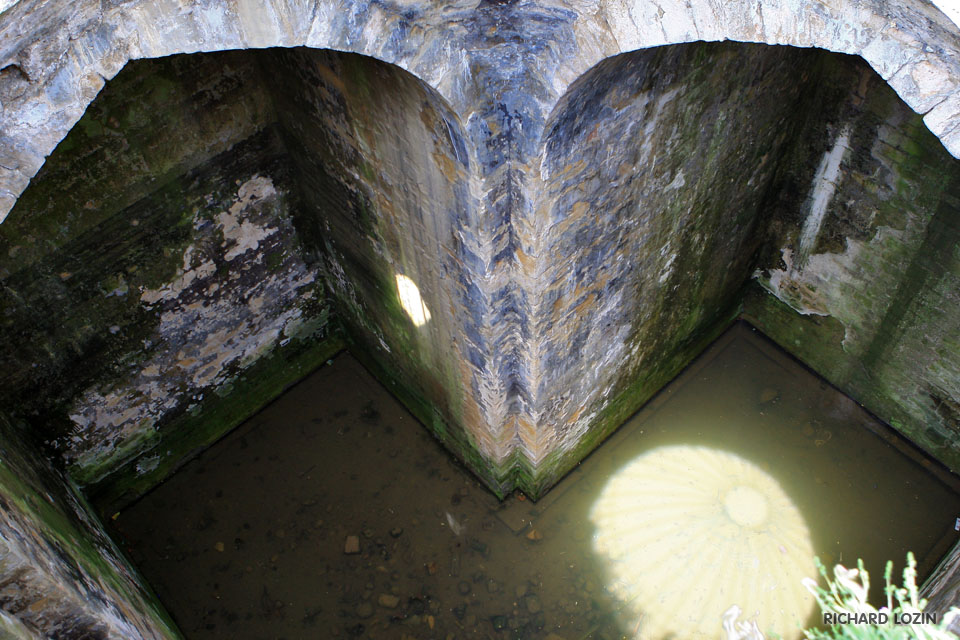
Not all archaeologists agreed with this interpretation. I will not give all the arguments of the parties, there are a lot of them. Articles, candidates, conferences, the transformation of best friends into enemies did not lead to a result. In the absence of documentary sources, the dispute remained unresolved. And to dig out the building does not work. Firstly, the Naryn-Kala fortress belongs to the UNESCO cultural heritage sites, and you won’t be red tape there. Secondly, it is unclear how the walls of the building, which have been exposed to water for so long, will behave when released from the ground.
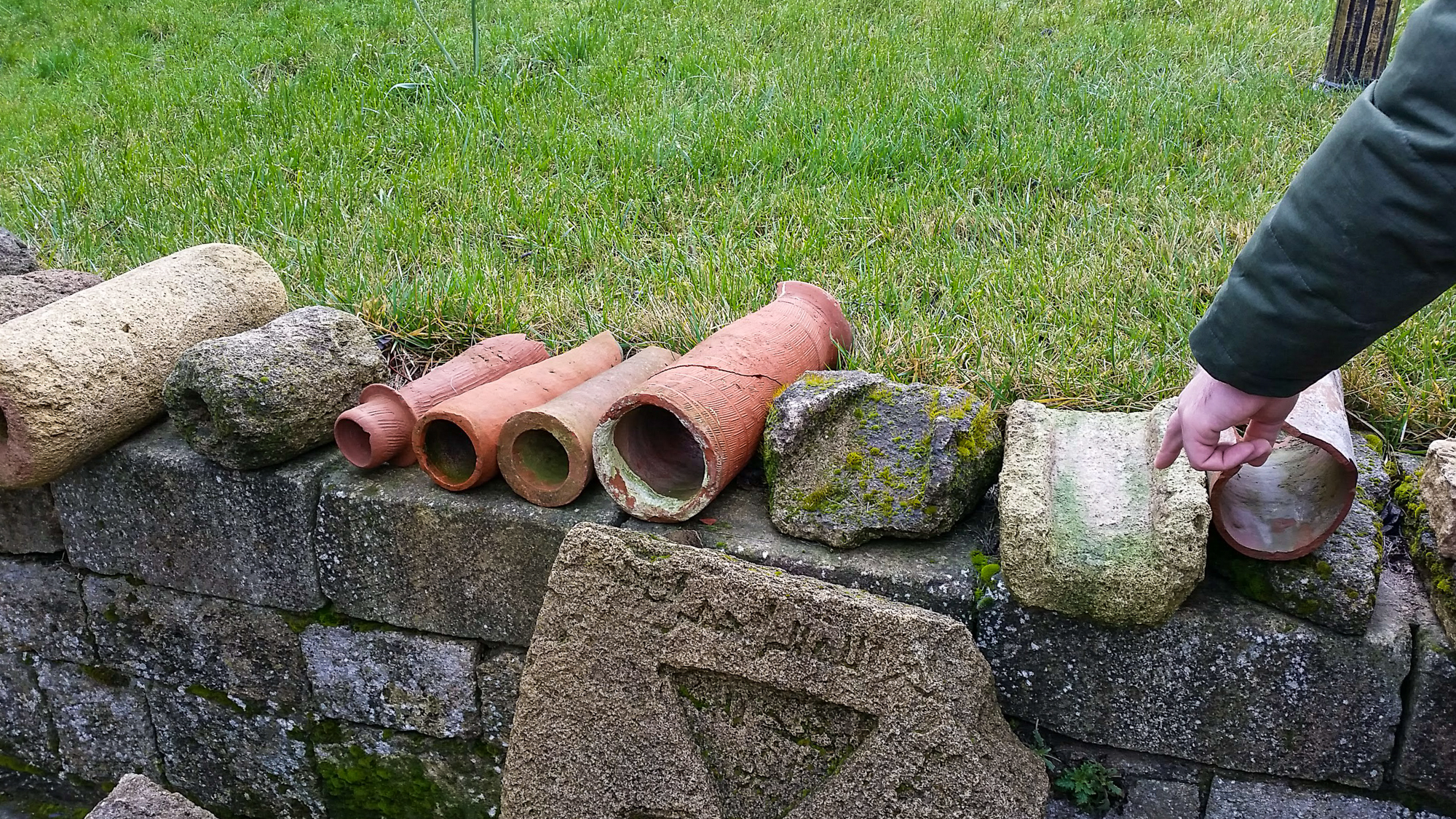
That's where it all grew together: a fortress, a mountain, muons, and NUST “MISiS”. And when the Dagestan archaeologists heard a story about muon radiography, they immediately realized that a solution to their problem was found. They immediately set about preparing the museum administration for a scientific experiment to be held on its territory.
Meanwhile, when I returned from Dagestan, I first rushed to Professor Polukhina. He told her about the object. The professor instantly agreed to look at him. After studying topographic maps, the joint scientific group came to the conclusion that the relief allows you to scan the building and get a three-dimensional picture.
While there is a search for financing for a full-scale experiment, for which it is necessary to install a number of sensors outside the temple and ensure their safety for several months, NUST MISiS provided scientists with a photo emulsion for sensors for conducting a preliminary experiment. In February, researchers placed the sensors indoors, and in April they took them and took them away for development. Now there is a digitization of plates and decryption of data. Perhaps already at this stage it will be possible to “see” what is there, behind the walls. But, of course, only an experiment with external sensors will give a full 3D picture. So stay tuned - the most interesting is yet to come.
In the meantime, a small photo selection from the expedition about how they conducted the experiment.
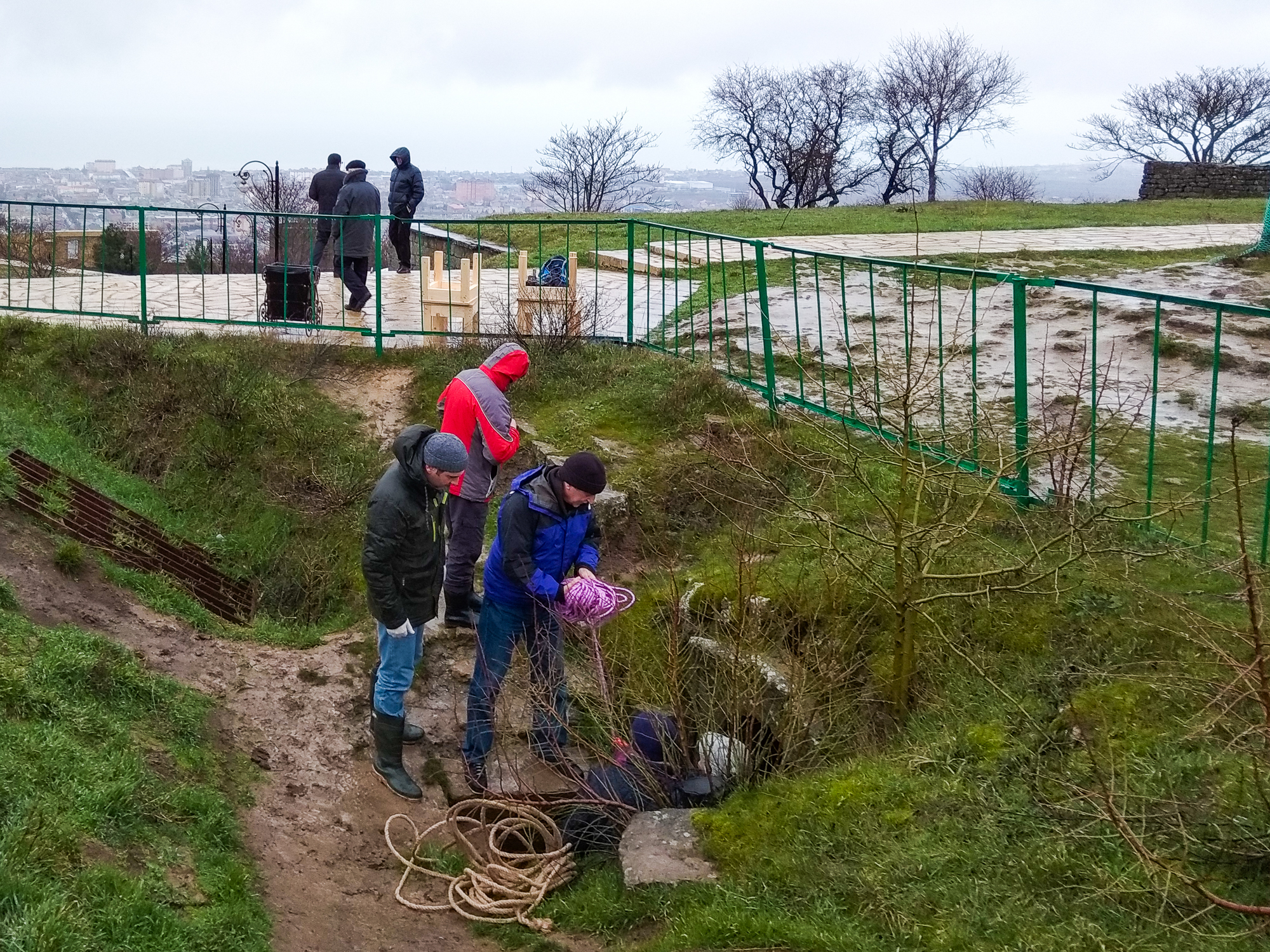
The sensors had to be loaded through the side hole.
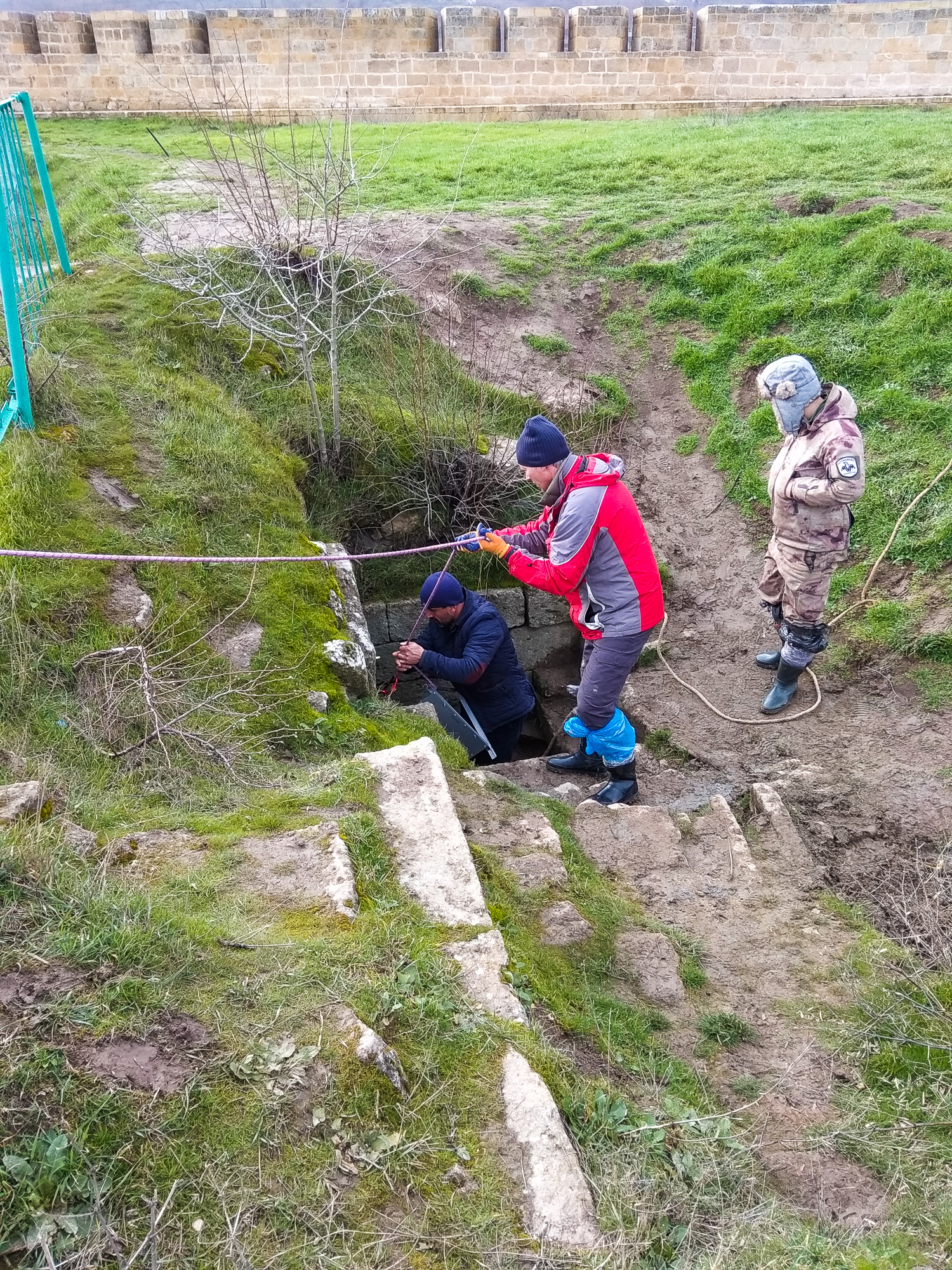
The second series of sensors.
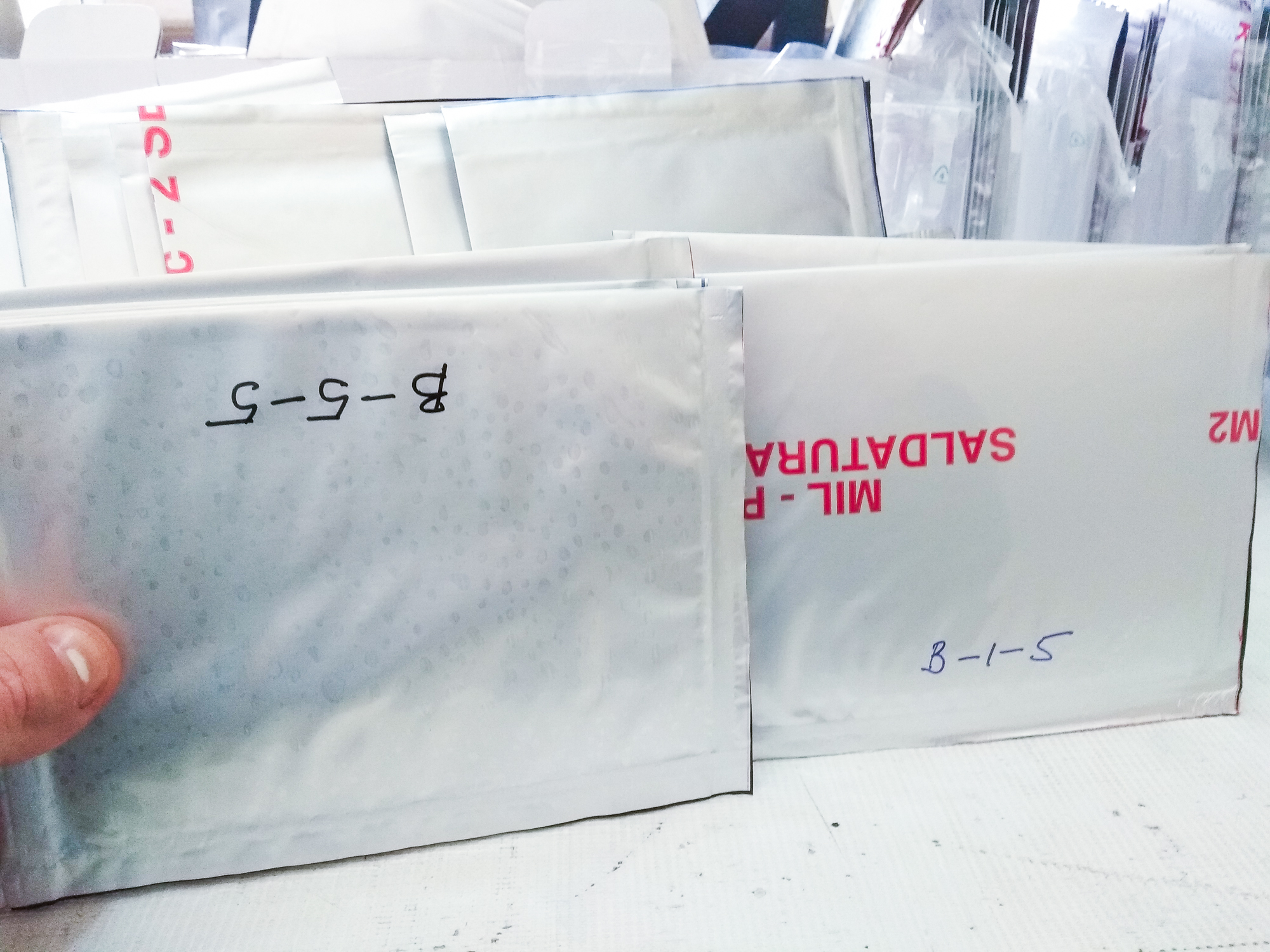
Detector plates.
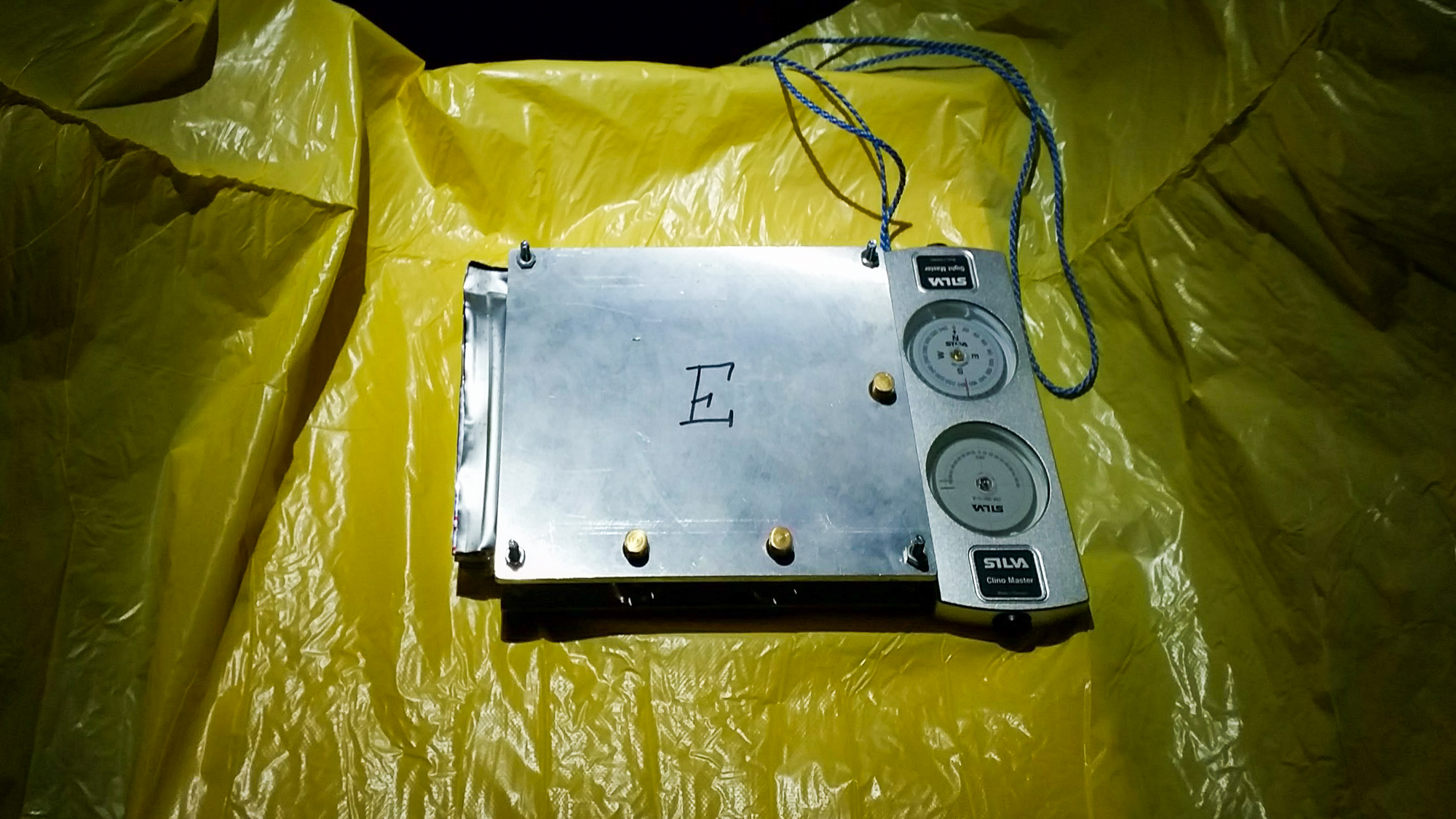
The sensor is small. I had to wrap it with a film so as not to rust - there is water around.
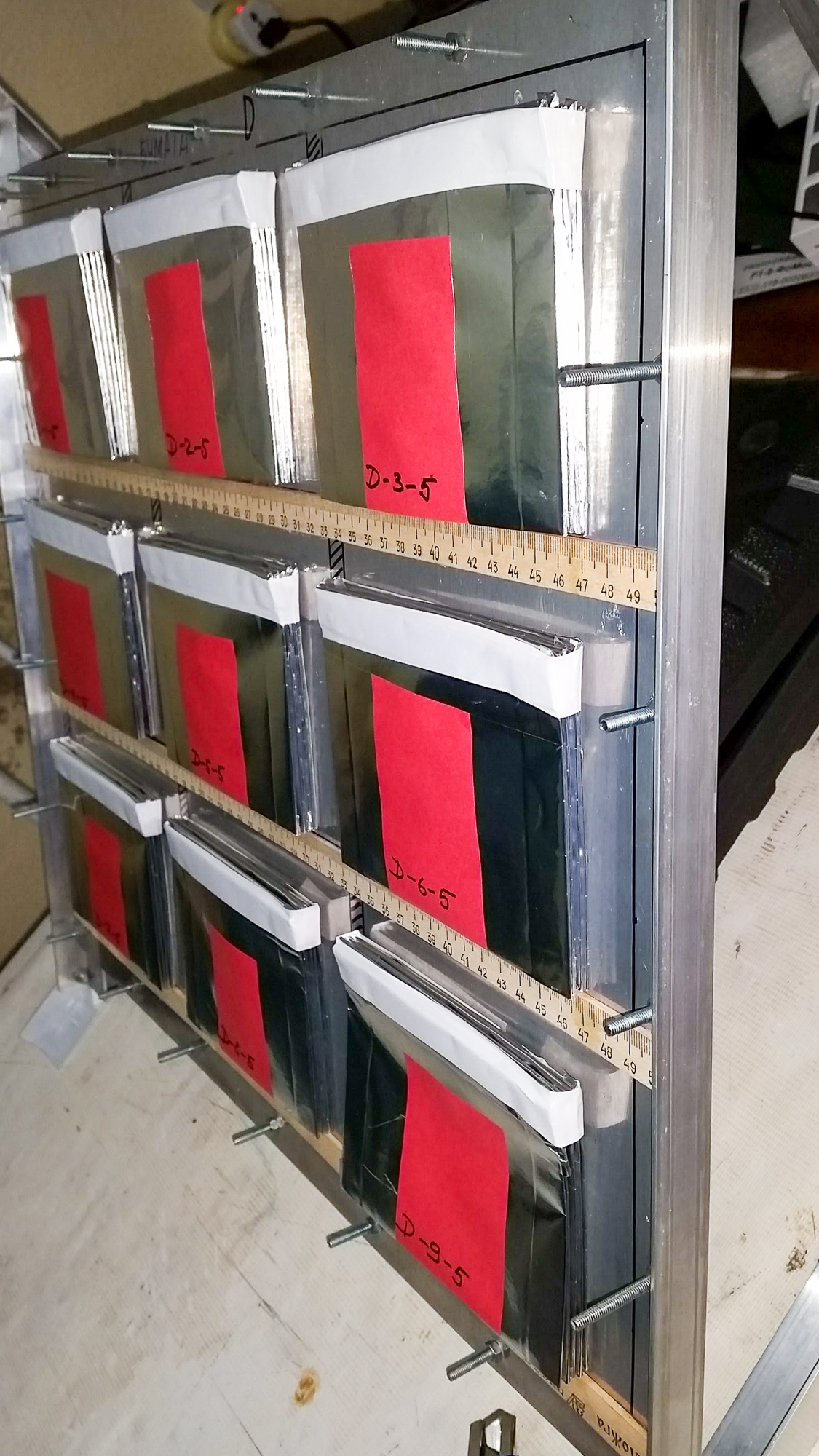
The sensor is large.

The Ministry of Emergency Situations helped to remove the sensors.
Thank you for the photo Natalya Okatyeva (LPI), Sergey Gnuskov (NUST “MISiS”), RoSMU, Richard Lozin, Alexander Golovko and the media of the city of Berezniki.
This is a non-standard “do it yourself”.

In August 2017, working in the press service of NUST “MISiS”, I learned about the technique, which I called “X-ray for mountains” for myself. The university’s leading expert and professor at the Lebedev Physical Institute, Natalya Gennadyevna Polukhina, the head of one of the three scientific groups in the world who is involved in so-called “muon radiography,” introduced me to her. The method by which it is possible to “shine through” objects of kilometer size is based on the registration of muons - elementary particles that are born due to the collision of cosmic rays with the Earth’s atmosphere. So many of these particles are born that every minute 10 thousand muons fall on every square meter of the earth's surface. If any obstacle (a building, mountain or just soil) is encountered on their way, then passing through it, the muon flux weakens. The rate of decrease in flow depends both on the thickness of the obstacle, and the density of its constituent substance. The maximum mean free path in water, for example, is about 8.5 km. In the land - almost 2.5 km.

However, the interiors of small (several meters) objects can also be peeked. And the resolution will be even better. The main thing is that only this object should stand on the path of the muons to the sensor. As Natalya Gennadyevna herself says: The new technology has other areas of application. “It is possible to assess the condition of the vent of a volcano, a nuclear power plant reactor, or a glacier in the mountains. You can find a new natural underground storage facility for natural gas, catch a fire originating in a mountain that was burned during coal mining long before it burns out from the inside, predict the eruption of a volcano or prevent the catastrophic consequences of ground failures in places of mined mines or on city streets, such as in Berezniki (Perm Territory). And we must remember that the inhabitants of many large settlements suffer from such technological failures. ”

As I said, there are three such groups in the world. One in Italy, one in Japan, one in Russia. The Japanese group, by the way, shortly before became famous, having found a hidden room in the pyramid of Cheops. What modestly wrote in Nature. I don’t know what the Italians do, but Professor Polukhina oversees the installation of muon sensors as part of the new SHiP experiment (Search for Hidden Particles) at CERN. An experiment in which NUST MISiS participates together with 40 leading universities of the world. However, our conversation was remembered precisely by the fact that with the help of this technique one can search for voids and even determine the occurrence of rocks of different densities. Because with a difference of 5%, they already become visible. So scientists were looking for a place for a model experiment.
After a couple of months, thanks to the Russian Union of Young Scientists, I, as the editor-in-chief of the site on the search for financing (if interested, see the profile) for scientific groups was lucky enough to come to Dagestan State University.


And then, together with his representatives - get on an excursion to Derbent. And on top of the city, in the fortress of Naryn-kala, we came across a strange holey dome. To the question: “What is this?”, They told me a mysterious story.

It turned out that in this place underground located an ancient reservoir. The 12-meter-deep building dates back to the 300th year of our era. About two hundred and three hundred years ago, it was no longer used for its intended purpose, but before that it regularly supplied the fortress with water.

And everything would be fine, but the reservoir is somehow strange. In all normal reservoirs, the cross-section parallel to the earth is square (more precisely, rectangular). As a last resort, round. And here - cruciform. And this cross is located exactly on the cardinal points. Moreover, the corridor is elongated to the south. And the vaults of the room are such that, in combination with the dome, all of this from the inside looks like quite a Christian church. And if this is so, then this is the oldest Christian church on the territory of modern Russia. The opening of the century, one might say. Scientists who discovered such a miracle say that the temple was originally built as above-ground (as evidenced by the traces of the walled-in entrances), and the Arabs bombarded it with earth after they captured Derbent (approximately 700th year of our era).

Not all archaeologists agreed with this interpretation. I will not give all the arguments of the parties, there are a lot of them. Articles, candidates, conferences, the transformation of best friends into enemies did not lead to a result. In the absence of documentary sources, the dispute remained unresolved. And to dig out the building does not work. Firstly, the Naryn-Kala fortress belongs to the UNESCO cultural heritage sites, and you won’t be red tape there. Secondly, it is unclear how the walls of the building, which have been exposed to water for so long, will behave when released from the ground.

That's where it all grew together: a fortress, a mountain, muons, and NUST “MISiS”. And when the Dagestan archaeologists heard a story about muon radiography, they immediately realized that a solution to their problem was found. They immediately set about preparing the museum administration for a scientific experiment to be held on its territory.
Meanwhile, when I returned from Dagestan, I first rushed to Professor Polukhina. He told her about the object. The professor instantly agreed to look at him. After studying topographic maps, the joint scientific group came to the conclusion that the relief allows you to scan the building and get a three-dimensional picture.
While there is a search for financing for a full-scale experiment, for which it is necessary to install a number of sensors outside the temple and ensure their safety for several months, NUST MISiS provided scientists with a photo emulsion for sensors for conducting a preliminary experiment. In February, researchers placed the sensors indoors, and in April they took them and took them away for development. Now there is a digitization of plates and decryption of data. Perhaps already at this stage it will be possible to “see” what is there, behind the walls. But, of course, only an experiment with external sensors will give a full 3D picture. So stay tuned - the most interesting is yet to come.
In the meantime, a small photo selection from the expedition about how they conducted the experiment.

The sensors had to be loaded through the side hole.

The second series of sensors.

Detector plates.

The sensor is small. I had to wrap it with a film so as not to rust - there is water around.

The sensor is large.

The Ministry of Emergency Situations helped to remove the sensors.
Thank you for the photo Natalya Okatyeva (LPI), Sergey Gnuskov (NUST “MISiS”), RoSMU, Richard Lozin, Alexander Golovko and the media of the city of Berezniki.
